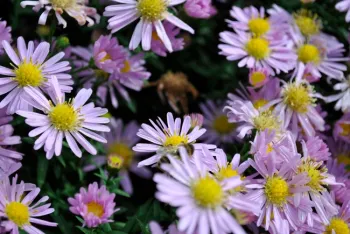Composites, Part One: Add Sun(flowers) to Your Garden
By Jeff Oster, UC Master Gardener of Butte County, October 5, 2018
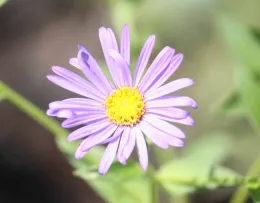
Composites are mostly herbaceous, but the family also includes shrubs, vines and trees. They have worldwide distribution, but are most common in arid and semiarid regions of subtropical and lower temperate latitudes. Most like full sun and good drainage, but will tolerate a variety of soils.
Economically important composites include safflower (for oil); many edible crops such as artichoke, lettuce, cardoon, and chicory; herbs like stevia, tarragon, coneflower and chamomile; and the humble dandelion, reviled in many quarters, but considered a useful edible in others. This article series will concentrate on ornamental long-flowering perennials adapted to our climate.
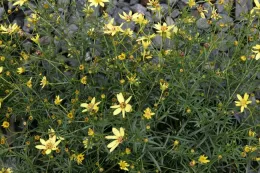
Coreopsis
Coreopsis is an old reliable garden favorite, with blooms in shades of yellow, orange, maroon, and red. Some varieties bloom all the way from mid-spring through fall, and make good cut flowers. Coreopsis love sun and are not finicky about soil – they will do fine in average to poor soils, but well-drained garden soils are best. They are drought-tolerant and low-maintenance. Deadhead flowers for longest bloom and divide every few years when overcrowded to re-invigorate them. They are easily propagated by division, stem cuttings, and seed. Coreopsis are deer resistant and attract birds.
C. verticillata tolerates drought and neglect, and blooms from summer through fall. C. verticillata ‘Moonbeam' has pale yellow flowers, while the flowers of ‘Zagreb' are more golden yellow. The bright yellow C. auriculata ‘Nana' is a low-growing form that spreads by underground runners to create a two-foot-wide clump in a year. Useful in front of taller plants, it too has a long blooming season if deadheaded faithfully. Another bright yellow form is C. grandiflora, a tough variety that reaches two feet in height and spreads to three feet wide and blooms throughout the summer.
Gaillardia (blanket flower)
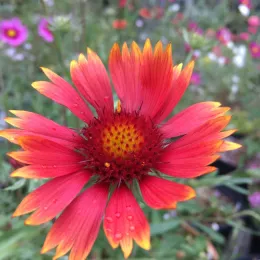
Butterflies and native bees love to visit these flowers, and their seeds provide food for birds. Pest problems are few; deer and rabbits avoid Gaillardia. The taller cultivars of Gaillardia make nice cut flowers.
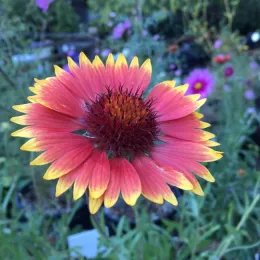
Other useful more compact cultivars in our area include G. x grandiflora “Arizona Sun” which has stunning mahogany-red rays rimmed in golden yellow. It reaches a height of twelve inches, and blooms sooner than many other cultivars. G. x grandiflora “Mesa Peach” and “Mesa Red” grow a bit taller, to eighteen inches, with peachy-yellow and deep red petals, respectively
Aster
Finally, plants in the genus Aster are perfect plants to think about at the beginning of the fall season because they add spectacular color in the autumn. Aster plants are very durable and long lived. Plant asters in early to mid-spring (or buy them now, in pots, to add fall color to a sunny porch or deck). They should be trimmed back in early spring and again in June to maintain bushiness; deadhead occasionally for more blooms. Divide every two to four years in the spring to maintain vigor and flower quality. The plants can be used in many places: asters work well in borders, rock gardens, or wildflower gardens. As a bonus, asters attract butterflies.
